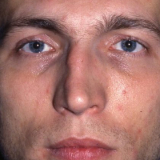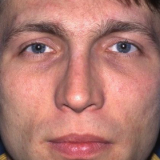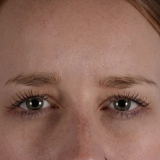Rhinoplasty surgeries are highly sought-after procedures because of the high success rates and how satisfied the patients are with the final results. At Colorado Facial Plastic Surgery in Englewood, CO, our highly skilled surgeons perform many types of rhinoplasty surgeries, including dorsal preservation rhinoplasty, which is a procedure that allows the “hump” of the nose to be reduced internally without total reconstruction. This helps prevent severe bleeding and is less invasive than traditional rhinoplasty techniques.
Contents
What happens during traditional rhinoplasty surgery?
In many cases, our surgeons perform open rhinoplasty. This involves wide skin exposure and the need for a significant amount of cartilage to provide strong grafts to create structure and support. This cartilage often comes from the septum, but at times, ear or rib cartilage may be needed, which leads to additional scars and discomfort.
What are the benefits of dorsal preservation rhinoplasty?
Dorsal preservation has been around for over 15 years and has made a resurgence lately, thanks to many leading rhinoplasty surgeons who have rediscovered its utility. This technique involves “preserving” or leaving the bony (upper third) and mid-vault (middle third) of the nose intact or undisturbed. This is achieved by performing bone cuts to “let down” the nasal bones into a new position. Further removal of cartilage from a part of the septum allows the middle portion of the nose to move into a new, desirable location. Humps on the profile view, for example, can be removed. Internal suturing is used to help keep the nose in this position. Additional tip work and structure may be provided through the open approach, which is often used in tandem with this technique.
Does every rhinoplasty candidate need dorsal preservation?
The best candidates for this technique are patients with good brow-tip aesthetic lines, small humps seen on profile view, and relatively straight noses, though deviations can be improved as well. The brow-tip aesthetic line is drawn from the medial part of the brow along the sides of the nose to the tip. It should have a gentle, inward (hourglass) curvature when considered ideal. By leaving the middle and upper third of the nose undissected, we are able to speed up surgical time, reduce post-operative swelling in most cases, use less cartilage, and keep an aesthetically pleasing front view of the nose largely the same.
Not every patient will be ideal for this technique. At Colorado Facial Plastic Surgery, our extensive rhinoplasty consultation process will help the patient to understand which option would fit best with their stated goals.
Contact our surgeons today for a rhinoplasty consultation in Englewood, CO
If you want to know more about our different rhinoplasty surgeries, including the dorsal preservation technique, and find out which is best for you, contact our team to schedule a rhinoplasty consultation. Our highly experienced and board-certified surgeons specialize in rhinoplasty surgery as well as multiple facial procedures in the head and neck, including facelifts, brow lifts, chin implants, and skin tightening. We also provide minimally invasive techniques to help patients reach their aesthetic goals, such as FaceTite and NeckTite. At Colorado Facial Plastic Surgery, we are committed to providing expert advice and comfortable care for our patients in the Denver, CO area.







